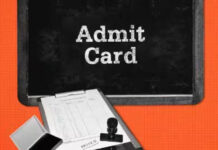Experimentation, observations, and conclusions are all crucial components of science education, and they are all presented in a lab report. Students in college should learn how to write good lab reports, and they can also buy college lab report online.
While studying to become a scientist, it is crucial for college students to know how to write a lab report and to be able to format them properly so that the results of their experiment can be expressed clearly and accurately.
Lab reports are an important part of the scientific method. Students can use experiments and observation to validate the results obtained by others. The objective, methodology, results, and conclusion of a lab experiment are usually included in the sections of a lab report, which vary depending on the scientific subject and course requirements.
The sections of a typical lab report are as follows:
- Title
- Abstract
- Introduction
- Method
- Results
- Discussion
- Conclusion
- References
TITLE
This must state the purpose of the research. It has to include the variables that are being investigated. Effective titles describe the topic and conclusions of your study in precise detail, and they serve as the initial impression of your lab report. It is not appropriate to write your title as a question. Make a title that expresses the study’s principal aim or objective clearly.
ABSTRACT
The abstract summarizes a research study shortly and comprehensively. Consider it a sneak peek at your entire lab report for your readers. An abstract should state the study’s purpose, detail the methods employed, materials used, key findings, highlight the study’s contribution to knowledge, and conclusion.
After you’ve written all of the other parts of your report, write the abstract last, in the past tense, so you can quickly summarize each section.
INTRODUCTION
A description of the essential steps in the experiment, as well as some background knowledge, should be included in the introduction of your lab report. Make a statement about your hypothesis or belief before experimenting to prove it.
Begin by presenting background information about your research question and discussing why it is significant in a theoretical context. Explain past research on your issue that is important to your study and how it may validate, broaden, or fill a gap in the scientific field.
Your introduction should explain the problem or issue at hand, as well as how your experiment will contribute to its resolution.
METHOD
In a formal lab report, the procedure section is essential. The procedures you followed to collect and evaluate data are detailed in a lab report method section. Writing a lab report should be centered on facts and obtained in a scientific approach. Provide adequate information for others to follow or assess your procedures. Mention the methods or ideas used to arrive at the results, as well as the variables that will influence them.
RESULTS
You should provide the findings of any statistical analysis processes you performed in your results section. The outcomes of statistical tests should be clearly stated as to whether they support or disprove your initial ideas. The following are some of the questions that should be answered in this section: Did the experiment work or not? Were the outcomes obtained in the experiment what the laboratory process predicted? What changes would you make if you tried the experiment again? What kinds of errors did you make, and how did you fix them? Your results can be presented in the form of tables and figures in the text. For complex studies, you should also give sample calculations in this section.
DISCUSSION
When writing a lab report, it’s critical to explain relationships. What is the relationship between your experiment and other research in the same field? This is what you should add in your lab report discussion to give your readers helpful information. The Discussion part will help you demonstrate your critical thinking skills as well as your comprehension of the experimental procedure.
Interpret your findings, compare them to your predictions, identify any causes of experimental error, explain any unexpected outcomes, and make suggestions for future investigations in this part. Suggestions for subsequent research prompted by your work should be in the same area.
CONCLUSION
The last section of your lab report should be your conclusion. Summarize the experiment’s outcomes, which should contain the results as well as a quick review of the experiment’s strengths and limitations. This includes the implications of your study for future research, such as the percent yield of a chemical, the identification of an unknown, and so on. Examine your experiment’s purpose and hypothesis to see if you achieved your goal by experimenting.
REFERENCES
The reference section contains a list of all of the sources that were used in the article, in alphabetical order. Include all relevant material, such as your laboratory manual, publications, online sites, and any other library resources you employed to write your laboratory report. Simply put, if you mention the name (and date) of a doctor, you must cite the primary source of the information.
FINAL CONCLUSION:
Interpreting your findings entails determining how they contribute to the solution to your main research question. Report whether your findings support or refute your hypotheses. The steps you used to collect data should be detailed in your experimental method. You must include enough details so that others can replicate your approach, but you must also be clear. Wherever appropriate, include detailed information in the sections.


























